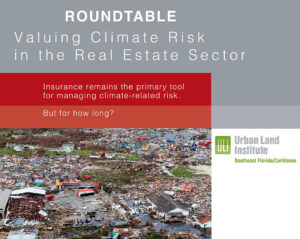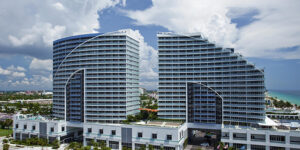
Miami’s condo market continues to be a strong magnet for international investment, but many brokers say the line between residents and investors may now be fuzzier than ever. “From what I see and what I’m hearing from developers,” he says, “about a third are buying for their own use as a permanent residence, a third for a second home and a third as an investment to rent out.
“Over the past two years rental inventory had been extremely low, so this is a very sought-after alternative.” That three-way split applies to the Greater Miami market as a whole, Mr. Kawas says; specific areas vary widely. Investors are much more prevalent in downtown, Brickell and Miami Beach, he says, “but if you go to Doral or Coral Gables or Coconut Grove there’s a much higher percentage of end-users – probably more like 60% end-users and 20% for each of the other categories.” Investors, Mr. Kawas says, can be further broken down into several different types.
“Some,” he says, “are buying in the lower to midrange price point – under $1 million – and are looking for a return of 5% to 7% or 8%. Then there are high-end buyers who are looking for more upside and capital preservation; they are happy with a lower return.” A third trend that is gaining momentum, Mr. Kawas says, is “a marriage between second homes and investment. For example, 60% of units at 6080 Collins Ave., which launched in August, are reserved, most of them by investors. “There’s a very high demand for properties with very liberal rental policies that will allow them to use it for a couple of months as a vacation home and then rent it out the rest of the year.”
Edgardo Defortuna, president of Fortune International Realty, says the trend for foreign investors to live in their units part of the year is particularly strong in Miami Beach, where he estimates about 65% of condos are owned by buyers from other countries. “They will spend two or three months here,” he says, “or the family will move here while the man of the house moves back and forth. This is happening much more, especially with investors from countries such as Venezuela and Brazil.”
As much as 85% of buyers of new product in the central business district and along the Biscayne corridor are investors, Mr. Defortuna says, and will likely put their units on the rental market. “Doral, which is heavily populated by Venezuelans, is an exception,” he says. “Most plan to stay here if they can figure out a way to become permanent residents.” ISG principal Craig Studnicky calculates that countywide the ratio of absentee to permanent condo owners is about 40/60. “It was higher 10 years ago,” he says, “but many now have their green cards and live here permanently or are early retirees from the New York area.”
While Brickell buyers are almost exclusively from South or Central America, Mr. Studnicky says, “moving north to Aventura and Sunny Isles there’s a bigger mix of people from the Northeast.”
Miami sees two annual influxes of snowbirds, he says – “those from the Northeast, who are here now, and South Americans who come here to escape their winter in June, July and August. So none of these buildings is ever fully occupied.” EWM’s David Siddons cautions against too much generalization. While he says his impression is that the downtown-Brickell market where he is active is about 80% either snowbirds or investors renting their units out, “that said, a number of buildings such as The Palace, Santa Maria or buildings on Brickell Key are not anywhere near that. They are family-friendly buildings that attract primary residents.” Like many other brokers, Mr. Siddons says, he is seeing more clients in the past three years who initially planned to live in their unit for only a couple of months a year but “end up using it a lot more than they ever anticipated.”





No comment yet, add your voice below!